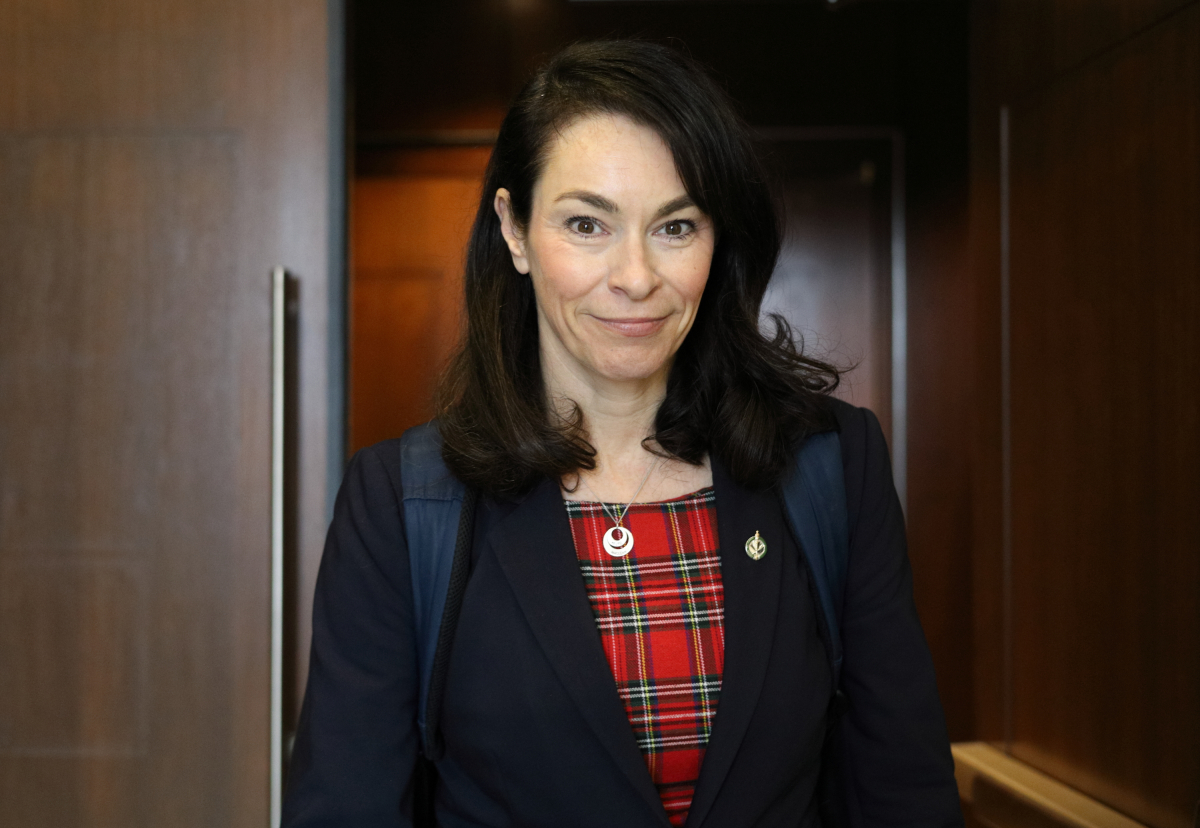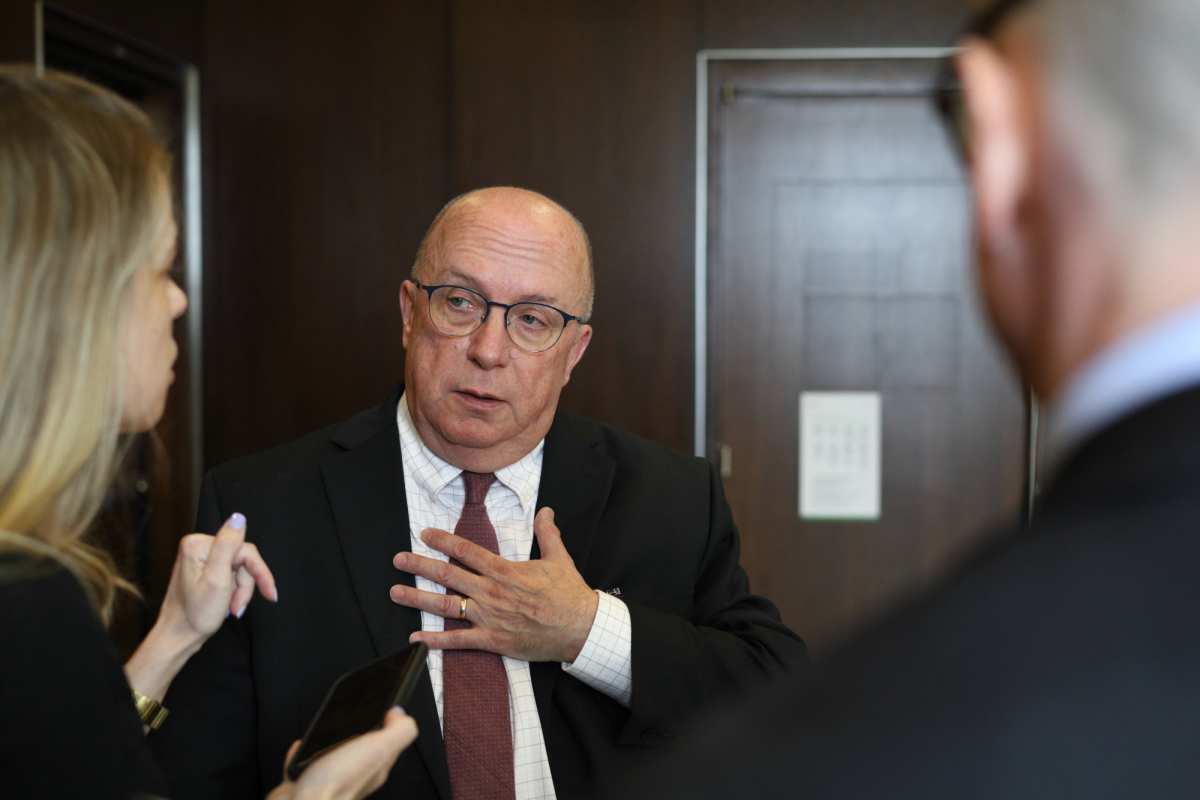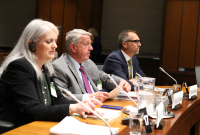Support strong Canadian climate journalism for 2025
The Alberta Energy Regulator’s president and CEO was in the hot seat Monday at a parliamentary committee meeting where MPs quizzed him on the regulator’s role in failing to quickly communicate information about multiple tailings leaks in northern Alberta to downstream communities and various levels of government.
MPs wanted to know why the regulator waited nine months after Imperial Oil reported discoloured water on its Kearl site on May 19, 2022, to issue an environmental protection order. The information about long-term seepage from four locations was only released on Feb. 6, 2023, after the company reported a leak of 5.3 million litres of tailings two days prior.
“I don’t think we have just a communications problem here; we might have a coverup problem. We don’t have just a pollution problem, I think we have some serious governance problems at play here,” said Liberal MP Patrick Weiler, asking why it took so long for the regulator to issue an order for the seepage that began last May.
Dealing with possible seepage is different than a leak, AER CEO Laurie Pushor told the Standing Committee on Environment and Sustainable Development. Analysis and testing were needed to understand what was happening on the ground and where the discoloured water was coming from, Pushor told the committee.
Last June, Imperial Oil told the regulator its surface water sampling results for the seepage indicated characteristics of oilsands tailings.
“We reached a conclusion in January that an environmental protection order would be necessary and appropriate,” said Pushor. “And at that time, we also knew that we needed to step up the communication extensively around that.”
Edmonton NDP MP Heather McPherson repeatedly asked Pushor when the AER told the province about the leak. Each time, he cited the independent review currently being conducted by the regulator’s board of directors, saying all the questions and answers will be addressed within it.
After McPherson continued to push him for a date, Pushor said: “I communicated to the provincial government one or two days prior to [the environmental] protection order being issued,” speaking about his own communication, not the AER’s as a whole.

Northwest Territories Environment Minister Shane Thompson also testified at the committee meeting. Despite the Northwest Territories having a transboundary water management agreement with Alberta — which requires quick, transparent communication about their shared waters — its government was not notified of the leaks and found out second hand through Indigenous governments in the area, which violates the agreement, Thompson has said previously.
It was Imperial Oil’s responsibility to inform anyone who could be directly affected by the release, Pushor said during his opening statement.
"It is clear that neither Imperial nor the AER met community expectations to ensure they are fully aware of what is, and what was, happening,” said Pushor. “And for that, I am truly sorry.”
In an April 17 update, federal Environment Minister Steven Guilbeault said the seepage was not communicated to downstream communities or various levels of government in a “timely or appropriate way” by the company or the regulator. Imperial Oil has demonstrated its compliance with a federal directive issued in March to contain the seepage and prevent it from entering fish-bearing waters, the statement reads, adding: “This remains the subject of an active Environment and Climate Change Canada enforcement file.”
Guilbeault has proposed a new notification and monitoring working group made up of federal and provincial governments, Indigenous nations from Fort Chipewyan, and the Northwest Territories government, with participation from oilsands company representatives.
When asked by reporters whether the regulator has a responsibility to report incidents like this to the federal government within 24 hours, like Guilbeault has previously said, Pushor did not answer, instead citing the independent review being carried out by the board.
At a committee meeting last Monday, multiple Indigenous leaders and representatives called for the regulator to be dismantled, saying it is captured by industry and “a complete joke.”
McPherson brought up the regulator’s decision to suspend certain environmental monitoring requirements in 2020 due to COVID-19, including surface water testing. Indigenous communities found out about the suspension of monitoring programs through the media, she said, drawing a parallel to the Kearl situation, where communities had to notify each other.
“At that time, you said the AER would do better,” said McPherson. “From my perspective, what we’re seeing is the AER failing Indigenous communities, failing to communicate when disasters are affecting their communities, saying sorry, and then doing it again.
“I don’t see any other way we can interpret this. Coming forward and saying we’re going to do better without ever doing better is not particularly helpful.”
Since its inception, the regulator has faced criticism for selecting oilsands industry insiders from various labour, landowner, Indigenous and environmental groups to run the show. Its previous chair, Gerry Protti, founded the Canadian Association of Petroleum Producers, a prominent industry lobby group. The current AER board is comprised of eight people, including an environmental scientist, Alberta’s deputy minister of environment and two former oil and gas senior executives.
“Industry proponents fall within the guidelines of the Alberta Energy Regulator, so they do as much as they're told to do within the regulatory system,” said Carmen Wells, director of lands and regulatory management at the Fort Chipewyan Métis Nation Association. “It is essentially industry reviewing their own clients and approving their own projects; it is a very one-sided process.”
Dene National Chief Gerald Antoine likened the situation to asking abusers at residential schools to investigate themselves.
Decades of poor regulations must be changed so nations won’t be “at the mercy of the decisions of Alberta's policymakers who are willing to sacrifice in northeastern Alberta,” said Wells. “Canada needs to be a larger presence in the mismanaged oilsands.”
The situation at Kearl has brought to the fore the looming issue of more than 1.4 trillion litres of toxic tailings contained in human-made ponds. In the last week, more oilsands issues have been reported. One of Suncor’s run-off collection ponds in Fort Hills released water with higher-than-allowed levels of sediments and substances. On Friday, Suncor found dozens of dead birds, a muskrat and a vole at a tailings pond at Suncor's Base Mine Site, according to the regulator’s website.
During his opening statement, Thompson reiterated that the Northwest Territories will not support a plan to release treated tailings into the Athabasca River. This is one option being examined by the federal government that would amend the Fisheries Act to allow treated wastewater to be released, but Indigenous governments and communities in Alberta and the Northwest Territories condemn this plan and call for health and environmental studies on the cumulative impacts of the pollution.
“How can Canada even consider releasing oilsands mine waters into the Athabasca River without the studies being done, without knowing how they currently stand and their status?” Wells asked parliamentarians.
“We’re not even considered as human beings” and this is embedded in law, policy and regulations that we didn't have any say in, said Chief Antoine. “Our backs have always been against the wall.”
When something is damaging your home, you need to “completely shut it down until the full extent of the spills and leaks have been resolved,” not let it continue and make excuses, said Chief Antoine.
“It's really harming us … this is life and death for us, this is life and death for the land. All the living things that live in our home, this is life and death for them.”
Natasha Bulowski / Local Journalism Initiative / Canada’s National Observer






Comments
It is not that we might have a coverup problem, it is a fact once your hear that it took 9 months to get the message to the people down stream.
If it was a MP or MPP that was drinking or using that contaminated water you would have heard about it in days of not hours of it occurring.
‘We might have a coverup problem’: MPs grill Alberta Energy Regulator CEO over oilsands tailings leaks
You think? Of course, it was a cover up, not only by Imperial Oil deliberately, but also by the Alberta Energy Regular, Danielle Smith & the UCP. Just like their "No Plan" climate change plan, the UCP has ZERO interest in climate change, just a free-for-all for the oil & gas sector with ZERO consequences. Despite oil & gas must clean up abandoned wells, they don't, the UCP does ZERO.
Thank you for this article. I feel angry about the whole situation. The land, the people and the waters are being sacrificed for the oil and gas industry. When will it stop? The pollution that is being allowed in the tar sands will eventually come back to haunt us all....
And this is such a blatant example of regulatory capture. Will there be any consequences for Imperial Oil and the Alberta Energy Regulator? Certainly the government of Alberta won't do anything.
It wil never stop in Alberta because Albertans are greedy and self-centered. Look who they keep electing....
I wonder what Albertian will do when the province ends up as a toxic wasteland eventually, while the oil & gas companies quietly disappear to avoid having to clean up as they do now with abandoned oil wells.
And now that we know how long toxins were allowed to leak into our northern Alberta waterways and land base, we heard last night that workers in Kearl are being asked to take a 7 dollar wage rollback....or get lost.
So we also know who Big Oil intends to have pay for their incompetence........and its not their shareholders. They actually count on the Alberta tight right to look the other way while temporary foreign workers are brought in to replace people who've worked up there for years........EXPLOITATION IS THE NAME OF THE GAME, FOR EARTH, WATER AND WORKERS. Pretending otherwise, is just UCP dog whistling in the dark.
Take a look at the mug of the AER regulator. Any body reader gets the message.
Honestly, headlines like this just trigger my mind to "Gee, d'ya think???"
I'm glad this stuff finally gets aired, but the crimes that Alberta under this government has committed, its short-sightedness regarding the end of the oil era, its inability to put one legislative foot in front of the other..........Hey! They could be part of Ford's gang!
This event mirrors similar behaviour of the AER over decades, in all of Alberta, not just the North. The damage done by fracking has still not been revealed to citizens of this province.
Neither the AER for once, or its masters in the UCP inner cabinet, didn't select this fellow from the list of oil company personnel as standard practice. But that's of little comfort because it's obvious his background as Deputy Minister for the Saskatchewan Ministry of Energy and Resources for the two years ending in 2020 gave him practice as a Yes Man for oil, gas and coal there under the UCP's best pals from next door.
Kudos for the NDP and Liberals for both standing together on calling the responsible organizations and individuals on this cover up, and for standing up for First Nations living downstream.
“How can Canada even consider releasing oilsands mine waters into the Athabasca River without the studies being done, without knowing how they currently stand and their status?” Wells asked parliamentarians. Great question that can not be answered truthfully or honestly by government.
You can add this to a long list of asine decisions made by our O&G captured governments, like buying TMX for example. These dirty energy corporations could care less about the environment nor peoples lives as this "regulatory body" lies and covers up for their destruction.